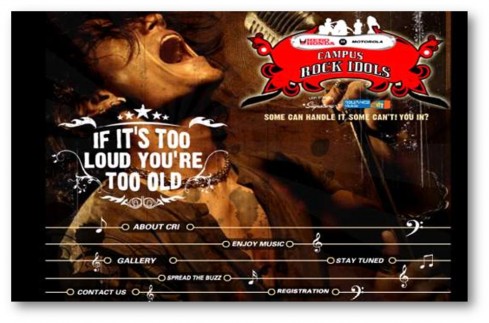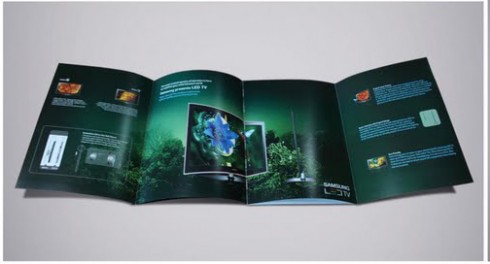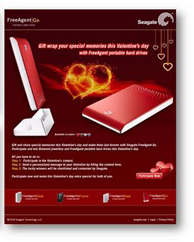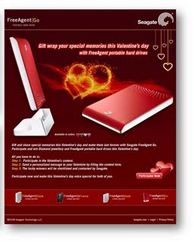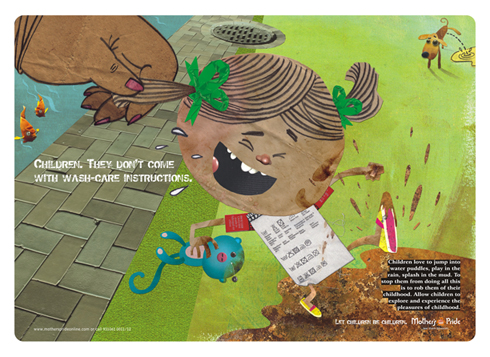By Sanjeev jasani, VP, OgilvyOne, New Delhi.
A lot has been said on customer value. And entire business models have been built around this concept. I have simply tried to collate my understanding on the subject and share my experiences with you.
Successful customer relationships are built on the bedrock of superior customer value. To attract and retain your most important customers, you must understand what they care about and what value propositions will appeal to them. While “value” is an overused buzzword, we rarely pause to reflect if we really understand what value is.
It is a natural human failing to question the concepts that we think we know well. We don’t know who it was who discovered water, but we are pretty sure it wasn’t a fish. In my 10 years of experience in this industry I have read a number of pieces about different aspects of creating, delivering and capturing customer value. But this is my first attempt to distill my understanding of customer value into six fundamental lessons. I would encourage people to add to these lessons or even criticize them.
What is Value?
The dictionary defines value as “Worth in usefulness or importance to the possessor.” As this definition suggests, value is the assessment of “all that you get in return for all that you give” in an exchange. More formally I define customer value as “the perceived worth of a set of benefits received by a customer in exchange for the total cost of an offering, taking into consideration available competitive offerings and price.”
Consider an example. When a customer buys a new BMW car he gets a certain level of performance, comfort, safety and entertainment benefits from the car. He also gets service benefits like financing, warranty, repair, scheduled maintenance and roadside assistance. And he gets the social status of belonging to an exclusive club of BMW owners. In return the customer invests money, time and effort in searching for the right car and dealer, negotiating the right deal arranging for financing and maintaining the car over its lifetime. The customer will asses the BMW’s value based on how these benefits, weighed in proportion to the importance that he placed on the benefits, compared to the total cost of buying and owning the car. The customer’s assessment of value is also influenced by other new cars he may have considered, the car he currently owns, as well as the alternative of taking public transportation instead of owning a car.
The definition embodies six fundamental lessons on customer value.
1. Value is Customer-Defined
You don’t define value. Your customers do. As peter drucker the father of management theory, notes, “what the business thinks it produces is not of first importance … What the customer thinks he is buying, what he considers value, is decisive. And what the customer buys and considers value is never a product. It is always utility, that is, what a product does for him.”
So the first lesson of value that I learnt is that value is that what you sell (products and service) and is not what your customers buy (utility and value). You may grossly misunderstand what business you are in if you see your business through the product lens. It is a myth that “If you build a better mousetrap the world will beat a path to your door.” Customers don’t want mousetraps. They want to get rid of mice. While you may be busy building a better mousetrap, the customers may simply get themselves a good house cat!
To understand how customers define value, we must first focus on the outcomes that customers want when they buy and use these products. This will help you understand what your real business is. Of the 10 odd years that I have spent in this industry and the many brands that I have handled, I can think of one great example to share with you at this stage. Lafarge Cement. They understood that their real business was actually helping customers complete their construction projects and not selling bags of cement. At the end of the day, no one wants to buy cement; they want to build a house or a bridge or a road. They are looking for a solution. And thus was born a revolutionary idea “The Lafarge Home Building Center”. Charles Revson, the founder of Revlon, echoed the same idea when he famously observed, “In the factories, we make cosmetics. In the departmental stores we sell hope.”
2. Value is Opaque
If value is actually defined by customers, you need to get inside their hearts and minds to really understand value. Needless to say, this is a very difficult task. As Drucker notes “What is value for the customer … is anything but obvious.” Quantifying value is difficult, because we don’t understand customers, customers don’t understand themselves, and we don’t speak their language.
The first hurdle in quantifying value is that we don’t understand customers as well as we should. I recently read an article on how Mattel failed to understand the Japanese market for its Barbie dolls. Mattel was at a loss to understand why its word famous Barbie doll wasn’t an instant hit in Japan. After much qualitative research, they discovered that Barbie’s legs were too long and her chest too large – physical attributes that young Japanese girls could not relate to. To appeal to Japanese sense of beauty and aesthetics, Mattel changed Barbie’s dimensions and made the dolls eyes brown instead of blue.
The second barrier in quantifying customer barrier is that customers don’t always understand their own motives and cannot always articulate what they want. Consider the inexplicable popularity of growing functions and features on your mobile phone. 50% of which you simply never use. Yet, if one were to remove it from your mobile, would you buy it? My guess is no. Being a gizmo freak, I have spent time in mobile shops and it has amused me to see customers asking the dealer if the phone contains features like Bluetooth, VPN (Virtual Private Network), POP 3 mail facilities etc. On probing further I realized that a majority of them didn’t even know what they were, yet they wanted it. Cause everyone else has it. This has made me come to a conclusion, that the smarter you are with technology the better your chances of survival in the urban jungle, where everyone is trying to bump the other one off. No one wants to look like an idiot who is all thumbs when it comes to technology, the new wave to hit our country. So, unless you plumb deep-seated customer motives and emotions, you run the risk of misunderstanding what drives their perception of value.
The third challenge is that marketers don’t speak the customer’s language. Let us look at a hypothetical situation. If you were conducting a research on attributes that customers would consider important while buying a HDTV (High definition Television) do you think “aspect ratio” would be considered an important parameter. My guess is “NO”. In case you are thinking what is aspect ratio? Well, it’s a term used to define that HDTV screens are more rectangular than other regular TV screens, with a length to width ratio of 16:9 instead of 4:3 for regular TV. Confused? Well, I’m sure customers too will be and this feature would not score very highly in your research. Realize this, the average customers do not understand techno-speak. Try this, If you were to reword your description of aspect ratio to “cinema like wide screen” do you think they would rate it highly. “Bingo” you have him right where you want him to be. He is suddenly interested.
To make value transparent you must realize that you are not the customer. The first principal of customer research is “I have met the customer and he is not me.” Develop empathy with customers by walking in their shoes and feeling their pain. It is a good idea to spend a few days in the life of your consumer to understand their hopes, fears, problems and ambitions. This is a lesson I have learnt from a dear friend and planner colleague of mine called Saurabh Sharma. Thank you Saurabh, for making me realize and experience this.
3. Value is Contextual
Value like beauty lies in the eyes of the beholder. So it is irrelevant to talk about the value of a product without knowing the context within which the product will be evaluated, bought and used. Context has three dimensions: the end user, the end use situation and the environment. Customer assessment of value will be a function of who they are, what they want to do and the environment in which they live and work.
For example, a mother choosing a digital camera to take pictures of her child may value ease of use and convenience in a camera. A professional photographer on the other hand may emphasize on image quality, resolution and advanced controls. Hence the expression “Different strokes for different folks.” This is the essence of customer segmentation – identify groups of customers who have similar needs and priorities, who therefore will tend to respond similarly to your offerings.
4. Value is 3D
A common myth in marketing is that customers choose products purely based on superior features and functions. While functional value is important, it is only one of the three dimensions of value. Besides functional value customers also consider emotional and economic value. Emotional value is the psychological value that a customer derives from owning, using and buying a product. Economic value on the other hand is what the product is worth in terms of time and money.
Consider the value proposition of an Apple Power Book. According to Apple, The benefits of the Power book are its powerful processor, bright screen, expandability and flexibility. But to close a sale Apple must also demonstrate economic value of a Power book – Improved productivity for end users as well as GUI application developers. As far as the emotional value of owning a Apple product goes, well, just ask an Apple user and he will tell you.
Functional value is a good starting point but we need to translate functional value into economic value and develop emotional appeal which make the product far more sustainable.
5. Value is a Trade-off
Value is defined, as he perceived worth of something in relation to the total cost that customers pay for it. In fact it is a trade-off between the total benefits that customers get against the total cost they incur. So, in effect there are two ways of increasing customer value: Either increase the total benefits you offer or reduce the customer’s cost. It is important to understand that the purchase cost is only one element of the Customers total cost. We need to look at his total cost of ownership (TCO) and evaluate it to the benefits offered.
Sometimes customers may themselves not be aware of the hidden costs of using a product. Imagine a conversation between a pharmaceutical company CEO and a supplier of plastic. Now suppose the plastic supplier is trying to get the CEO switch to plastic bottles instead of the regular glass bottles. What is the first thing that the CEO would say? “Are your plastic bottles cheaper?” A classic case of the customer not seeing the TCO. The smart plastic supplier will try and show him his TCO of glass bottles and how plastic can add more value. First of all, plastic weighs less as compared to glass so the transportation cost would be lower. Secondly, plastic is not fragile so breakage loss would be lower. Thirdly, plastic bottles would save on labeling cost as u can print directly on plastic bottles. Fourthly, you can deliver plastic more frequently and in small batches thereby reducing inventory-holding cost. And finally the production line would be run faster as there is no breakage. As the example suggests there are several hidden costs in using glass bottles and the CEO was not even aware of them. To make an accurate value trade-off you must make sure that customers see the full picture of benefits as well as costs.
6. Value is Relative
Customers always evaluate value relative to available alternatives. Particularly the next best alternative. Some management gurus call this the customers “Best Available Substitute or Equivalent” or BASE. Customers always have a BASE, even if you don’t think you have viable competitors. If you don’t know your customers BASE you will never know the frame of reference customers use to make buying decisions.
Customers can use a variety of BASE to evaluate your product. This could be competition; it could also be your own product if you are trying to sell upgrades or new versions of your own product. Status Quo can be a BASE too. Doing nothing is always an option. And it is often a fairly attractive option as it entails less risk.
So whenever you think of value, you need to think of who or what you are up against, because this is the frame of reference that your customer uses to evaluate your value proposition.
Firms that adopt the value mindset think differently about the customers whom they focus on, the value proposition that they create for their customers, the growth strategy that they employ, the way they organize they marketing and sales organization, and the way they measure and reward success. Broadly we need to move from a product mindset to a customer value mindset.
In stormy economic seas, value can serve, as an anchor by reminding you that every initiative you engage in should be grounded in a clearly articulated customer value proposition. If you focus relentlessly on defining value as customers do, designing your offering based on what customers value, and measuring your performance in terms of value that customers experience, you will be well on your way to creating successful customer relationships.















